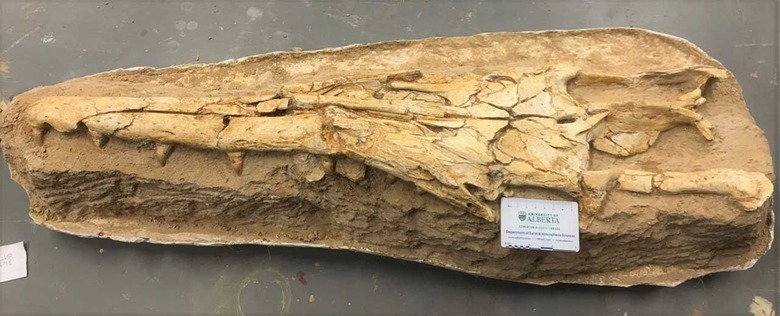New Species Of Mosasaur Discovered In Morocco
Most of us know at least a handful of dinosaur names such as T-rex and raptor, but few are probably familiar with the dinosaur species known as mosasaur. A mosasaur is a marine animal. A newly discovered specimen has a long crocodile-like snout that scientists believe suggests it was able to carve out a niche in a highly competitive marine ecosystem during the Late Cretaceous. Between 66 and 72 million years ago. Researchers from the University of Alberta, including lead Catie Strong and collaborators from the University of Cincinnati and Flinders University, made the discovery.
There are more than a dozen known types of mosasaur, creatures that could reach 17 meters in length and are said to resemble an overgrown komodo dragon. The creature discovered by the scientists ruled the marine environment in a part of what is now Morocco at the end of the Late Cretaceous Period. There is a key difference between the version that Strong and her team discovered and other known mosasaurs.

The newly discovered creature has a long narrow snout with interlocking teeth similar to the crocodilian gharials, a relative of crocodiles and alligators. Strong says that the fossilized creature's discovery adds a layer of clarity to a diverse picture that seems to be overcrowded with mega-predators competing for food, space, and resources. The creature's long snout shows that it was adapted to a specific form of predation within the ecosystem.
There is evidence that each species of giant marine lizard have adaptations for different prey items or styles of predation. Few of the adaptations in mosasaurs are as dramatic as the long snout on the newly discovered creature, and Strong notes that there could have been overlap in prey items in some cases. However, Strong says that overall there is evidence of diversification of the species into different niches.
The remains of the new species of mosasaur, known as G. almaghribensis, were discovered in a phosphate mine in Morocco that is rich in fossils. The remains included a meter-long skull and some isolated bones. Scientists note there was nothing to explain the cause of death for the specimen.
